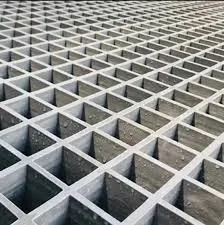
-
 Afrikaans
Afrikaans -
 Albanian
Albanian -
 Amharic
Amharic -
 Arabic
Arabic -
 Armenian
Armenian -
 Azerbaijani
Azerbaijani -
 Basque
Basque -
 Belarusian
Belarusian -
 Bengali
Bengali -
 Bosnian
Bosnian -
 Bulgarian
Bulgarian -
 Catalan
Catalan -
 Cebuano
Cebuano -
 China
China -
 China (Taiwan)
China (Taiwan) -
 Corsican
Corsican -
 Croatian
Croatian -
 Czech
Czech -
 Danish
Danish -
 Dutch
Dutch -
 English
English -
 Esperanto
Esperanto -
 Estonian
Estonian -
 Finnish
Finnish -
 French
French -
 Frisian
Frisian -
 Galician
Galician -
 Georgian
Georgian -
 German
German -
 Greek
Greek -
 Gujarati
Gujarati -
 Haitian Creole
Haitian Creole -
 hausa
hausa -
 hawaiian
hawaiian -
 Hebrew
Hebrew -
 Hindi
Hindi -
 Miao
Miao -
 Hungarian
Hungarian -
 Icelandic
Icelandic -
 igbo
igbo -
 Indonesian
Indonesian -
 irish
irish -
 Italian
Italian -
 Japanese
Japanese -
 Javanese
Javanese -
 Kannada
Kannada -
 kazakh
kazakh -
 Khmer
Khmer -
 Rwandese
Rwandese -
 Korean
Korean -
 Kurdish
Kurdish -
 Kyrgyz
Kyrgyz -
 Lao
Lao -
 Latin
Latin -
 Latvian
Latvian -
 Lithuanian
Lithuanian -
 Luxembourgish
Luxembourgish -
 Macedonian
Macedonian -
 Malgashi
Malgashi -
 Malay
Malay -
 Malayalam
Malayalam -
 Maltese
Maltese -
 Maori
Maori -
 Marathi
Marathi -
 Mongolian
Mongolian -
 Myanmar
Myanmar -
 Nepali
Nepali -
 Norwegian
Norwegian -
 Norwegian
Norwegian -
 Occitan
Occitan -
 Pashto
Pashto -
 Persian
Persian -
 Polish
Polish -
 Portuguese
Portuguese -
 Punjabi
Punjabi -
 Romanian
Romanian -
 Russian
Russian -
 Samoan
Samoan -
 Scottish Gaelic
Scottish Gaelic -
 Serbian
Serbian -
 Sesotho
Sesotho -
 Shona
Shona -
 Sindhi
Sindhi -
 Sinhala
Sinhala -
 Slovak
Slovak -
 Slovenian
Slovenian -
 Somali
Somali -
 Spanish
Spanish -
 Sundanese
Sundanese -
 Swahili
Swahili -
 Swedish
Swedish -
 Tagalog
Tagalog -
 Tajik
Tajik -
 Tamil
Tamil -
 Tatar
Tatar -
 Telugu
Telugu -
 Thai
Thai -
 Turkish
Turkish -
 Turkmen
Turkmen -
 Ukrainian
Ukrainian -
 Urdu
Urdu -
 Uighur
Uighur -
 Uzbek
Uzbek -
 Vietnamese
Vietnamese -
 Welsh
Welsh -
 Bantu
Bantu -
 Yiddish
Yiddish -
 Yoruba
Yoruba -
 Zulu
Zulu
Advanced FRP Materials for Heat and Nuclear Power Applications
FRP Materials for Heat and Nuclear Power Applications
Fiber Reinforced Polymer (FRP) materials have emerged as a transformative solution in various industries, particularly in the fields of heat and nuclear power applications. Their unique combination of strength, lightweight properties, and resistance to corrosion makes them highly suitable for challenging environments typically found in power generation facilities.
One of the primary advantages of FRP materials is their high strength-to-weight ratio. Traditional materials like metals often become cumbersome in large structures; however, FRP can provide the necessary structural integrity without adding significant weight. This characteristic enables more innovative designs in power plants, improving efficiency in both construction and maintenance operations. For example, the use of FRP in piping systems, structural components, and containment vessels can lead to reduced stress on supporting structures while enhancing overall performance.
Corrosion resistance is another critical factor where FRP excels. In heat and nuclear power applications, components are frequently exposed to harsh environmental conditions, including high temperatures and aggressive chemical agents. FRP materials are inherently resistant to many corrosive substances, thereby extending the lifespan of equipment and reducing maintenance costs. This quality is especially important in nuclear power plants, where containment of radioactive materials is paramount. The application of FRP in containment solutions helps to ensure safety and reliability in the face of potential risks.
frp materials for heat and nuclear power applications

Moreover, the thermal and electrical insulating properties of FRPs enhance their appeal for heat transfer applications. While metals are good conductors of heat and electricity, FRP materials act as insulators, which can be beneficial in various scenarios. In heat exchangers, for instance, utilizing FRP can prevent energy losses while maintaining optimal thermal performance, resulting in increased energy efficiency. In addition, the non-conductive nature of FRP reduces the risk of electrical hazards associated with equipment failures.
The flexibility in design afforded by FRP is another notable benefit. Manufacturers can mold FRP materials into complex shapes and structures, unlike conventional materials that may require extensive machining or welding. This adaptability allows for innovation in design while maintaining system integrity. In the nuclear sector, such flexibility can lead to improved safety features, custom fittings, and optimized layouts that enhance functionality without compromising strength.
In terms of sustainability, the adoption of FRP materials in heat and nuclear power applications is also commendable. With rising concerns about environmental impacts, FRP offers a more sustainable option compared to traditional construction materials. They contribute to reducing the carbon footprint associated with manufacturing and can be designed for recyclability at the end of their life cycle.
In conclusion, Fiber Reinforced Polymer materials are revolutionizing the landscape of heat and nuclear power applications. Their strength, lightweight properties, corrosion resistance, thermal insulation, and design flexibility render them indispensable in modern power generation facilities. As we continue to seek safer, more efficient, and sustainable energy solutions, the role of FRP materials will undoubtedly grow, paving the way for advanced technologies in the energy sector.









